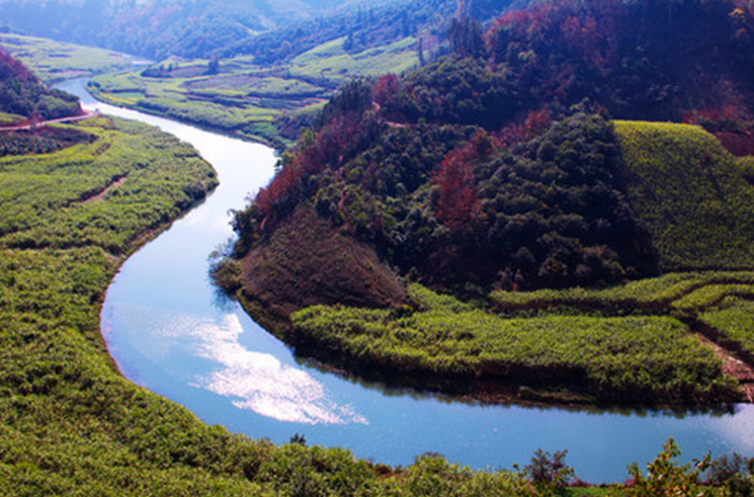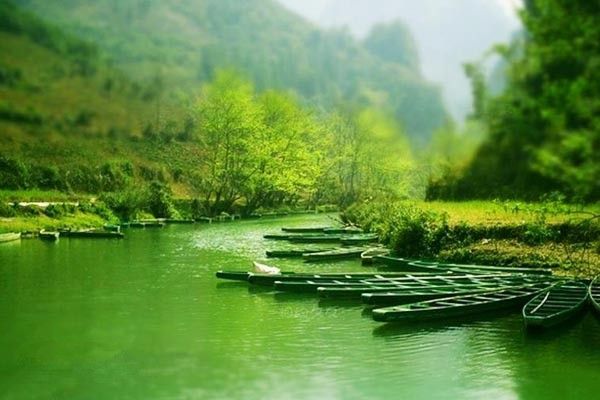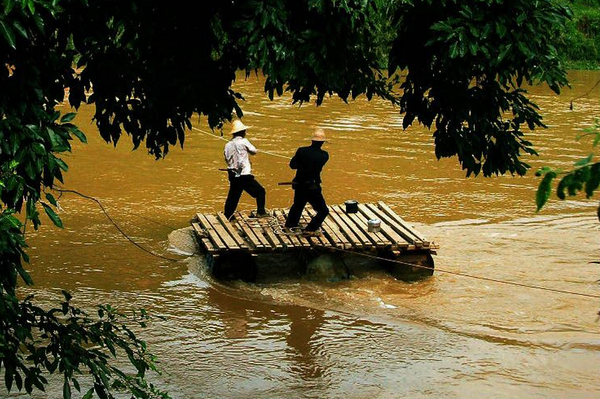Tuoniangjiang River in Funing County, Wenshan
Chinese Name: 富宁县驮娘江景区
English Name: Tuoniangjiang River in Funing County, Wenshan
Overview:
The Tuoniangjiang River Scenic Area is a national AA-level tourist attraction located in Funing County, Wenshan. It combines the picturesque rural landscapes of the Zhuang ethnic region, subtropical rainforest climate, and unique lava valley topography into a natural reserve.
Attractions:
- Bai’ai Seven Vinegar: Bai’ai Seven Vinegar is a rare intangible cultural heritage of Yunnan, with a brewing technique that dates back 300 years. This traditional product is made from glutinous rice through liquid fermentation. The vinegar has a rich taste and pure aroma.
- Funing Low-Altitude Sports Training Base: This is the only high-altitude, low-altitude sports training base in Yunnan. Located in the Xiangsi Island area of Bai’sai Town, upstream of the Baise Water Conservancy Hub, the base covers 7,000 square meters at an altitude of 230 meters. It features natural scenery along the Zhening River, tropical seasonal rainforests, reservoir islands, riverside beaches, and nearby villages, integrating local natural landscapes and ecological culture.
- Bo’ai Wharf: Bo’ai Wharf, located on the south bank of the Right Jiang River in Bai’ai Town, was built during the Daoguang period. The wharf is 44.4 meters long with 77 steps divided into eight sections. It is traditionally known as the “Ladder of Love,” where Zhuang ethnic men and women climb the steps to the riverside banyan tree on the seventh day of the seventh lunar month for a traditional swimming ritual, which signifies their commitment to marriage.
- Bai’ai Ancient Town: Bai’ai Ancient Town is at the confluence of the Tuoniangjiang, Nama River, and Puting River, marking the starting point of the Right Jiang River. Historically, it was a vital trade route for southwestern China, connecting to Guangxi and coastal regions. Bai’ai has long been known as the “Eastern Gateway of Yunnan” and a major trade hub.
- Yue Dong Guild Hall: Originally known as the Lingnan Guild Hall, it was renovated during the Ming Jiajing and Qing Kangxi periods (1894). The Yue Dong Guild Hall features a Lingnan-style four-courtyard, two-entry structure with a mixture of architectural styles. The building is encircled by high walls.
- Yue Xi Guild Hall: Yue Xi Guild Hall, built in the Qianlong era and renovated during the Jiaqing and Guangxu periods, remains partially preserved with two doors. It features brick and timber construction with a hard mountain roof, though it is significantly damaged.
- Jiangxi Guild Hall: The Jiangxi Guild Hall covers 72.04 square meters and shares similarities with the Yue Xi Guild Hall in architectural style. It is a county-level cultural relic protection unit.
- Guanyin Temple: The Guanyin Temple consists of a mountain gate and a main hall. The mountain gate is oriented northeast with brick columns and a tiled roof, while the main hall has three bays and three deep sections, each with brick walls and archways. The temple, dedicated to the Guanyin deity, is elevated and accessed by steps, built in the Qing Dynasty and renovated during the Republic of China.
- Poya Village: Poya Village is a traditional Zhuang village located along the Tuoniangjiang River, with 62 households and 278 residents. The village maintains its ancient customs and lifestyles, including traditional agricultural practices and rituals. The name “Poya” means “a place of blooming mountain flowers” in the Zhuang language. The village features traditional stilt-style houses and offers visitors a chance to experience Zhuang culture, including weaving, spinning, and local songs.
Administrative Division: The Tuoniangjiang Scenic Area is located in Funing County, southeastern Yunnan, bordering Guangxi. It is divided into three areas: Tuoniangjiang, Guichao, and Niwang Mountain, with 35 attractions and a total area of 130 square kilometers. The area is known for its picturesque, unique, and tranquil landscapes, including dense cave formations and numerous historical sites. It features rich ethnic culture and a favorable climate. The scenic area is classified as a national 2A-level scenic spot and a provincial-level famous scenic spot.
Features:
- Photography
- Hiking
- Canyon views
- Folk customs tours
- Ethnic minority villages
- River and canyon landscapes
Travel Tips:
- Funing County to Bai’ai Town is approximately 74.8 kilometers.
- To reach Funing County, you can fly, take a train, or travel by bus to Kunming. From there, take a bus to Funing County and rent a car to reach the destination.


















